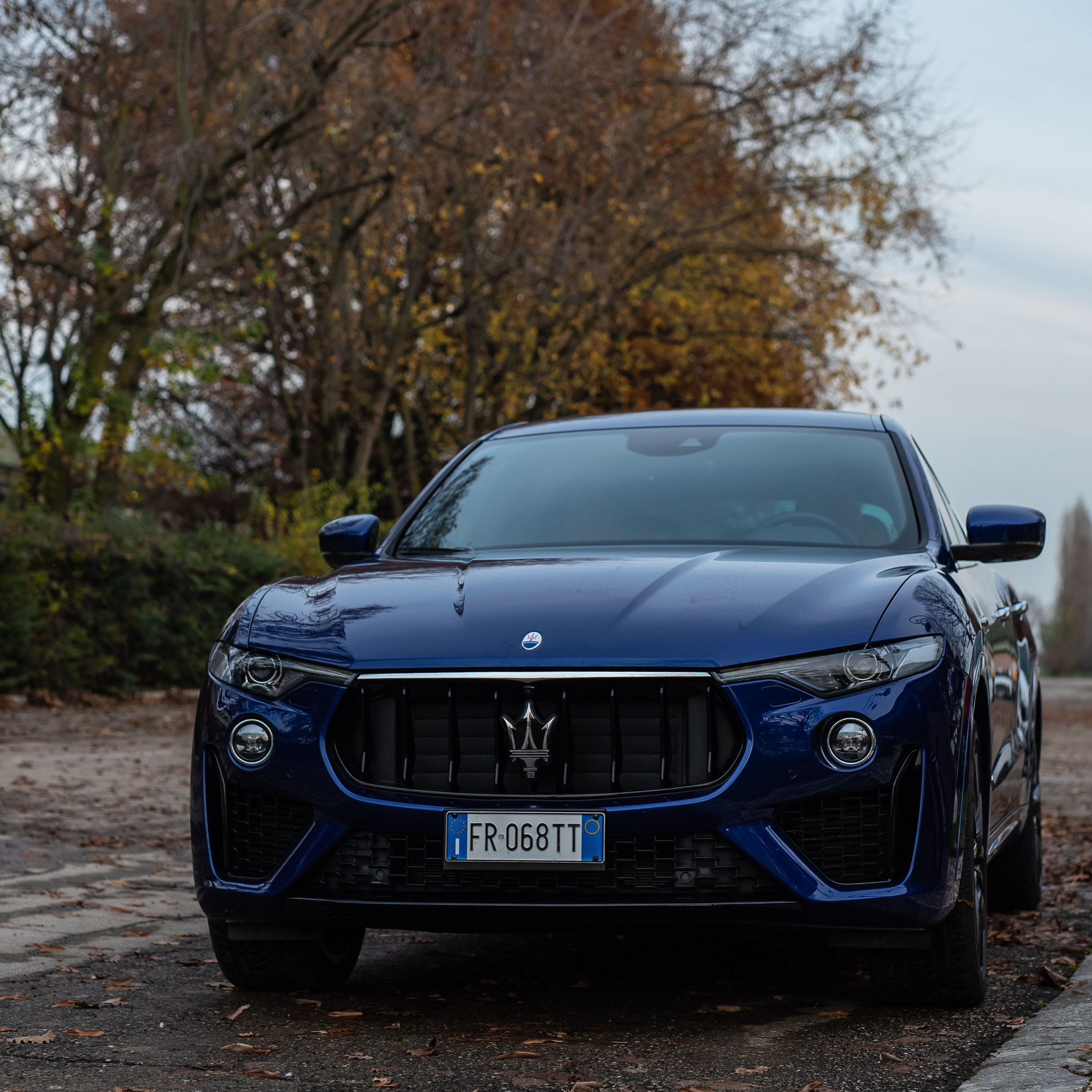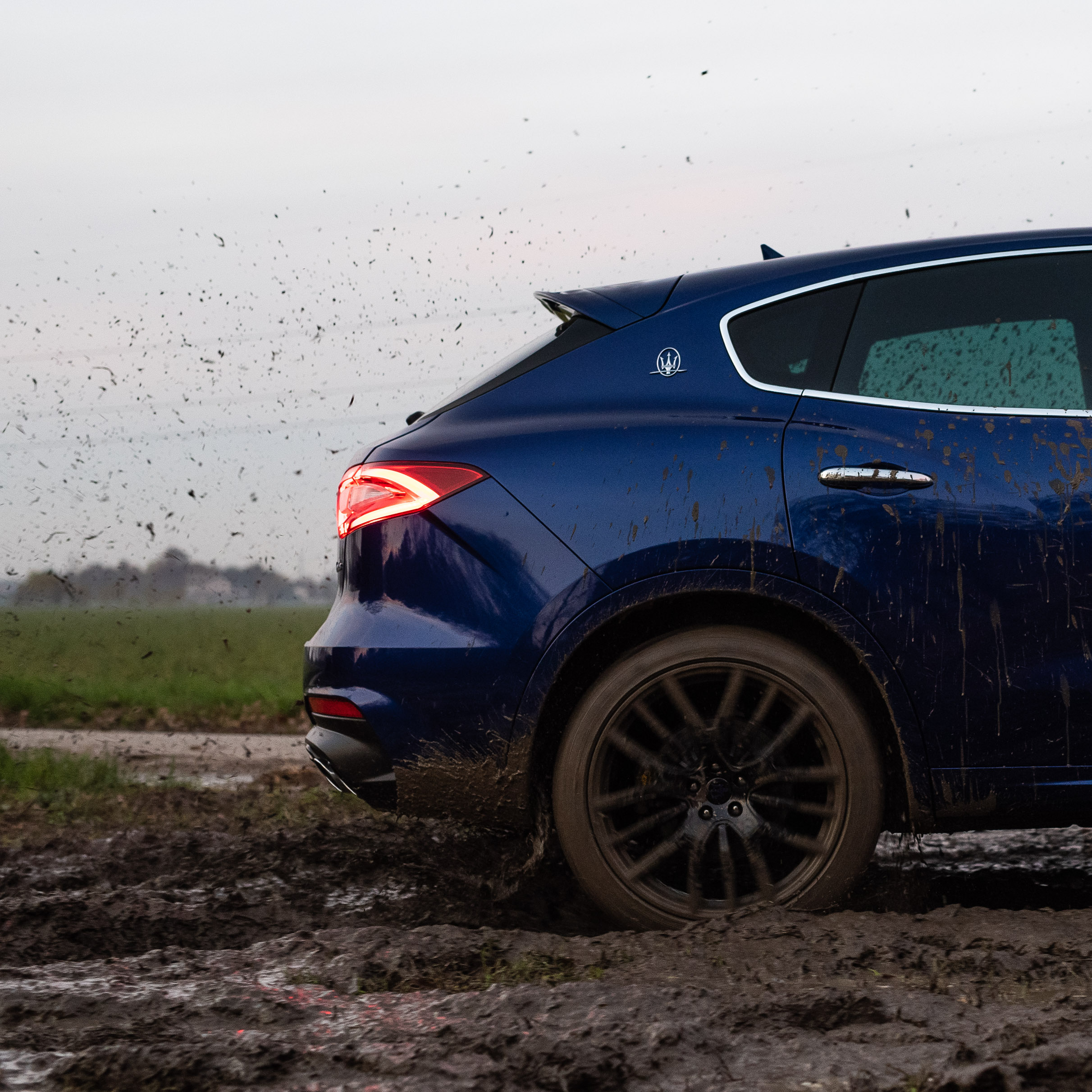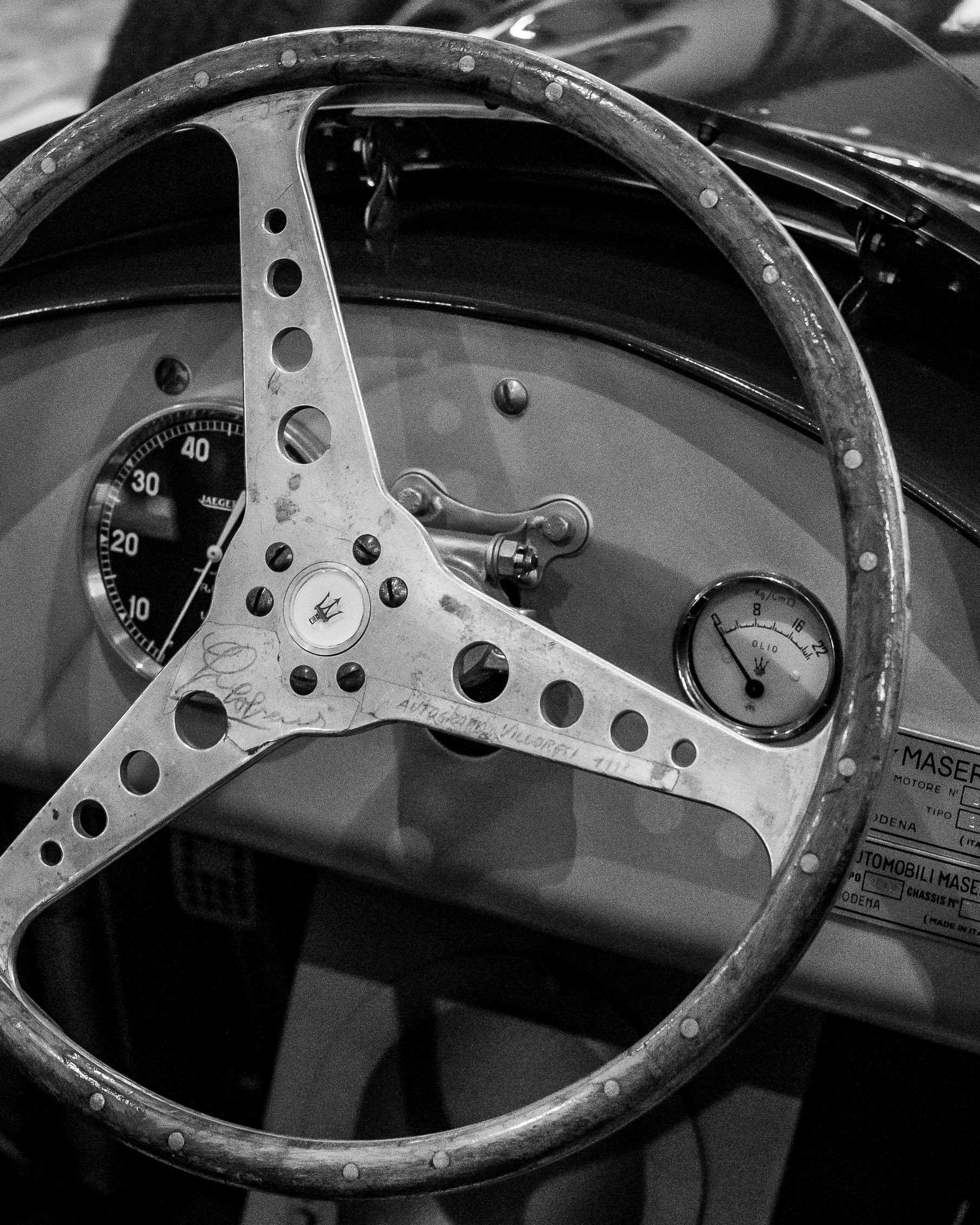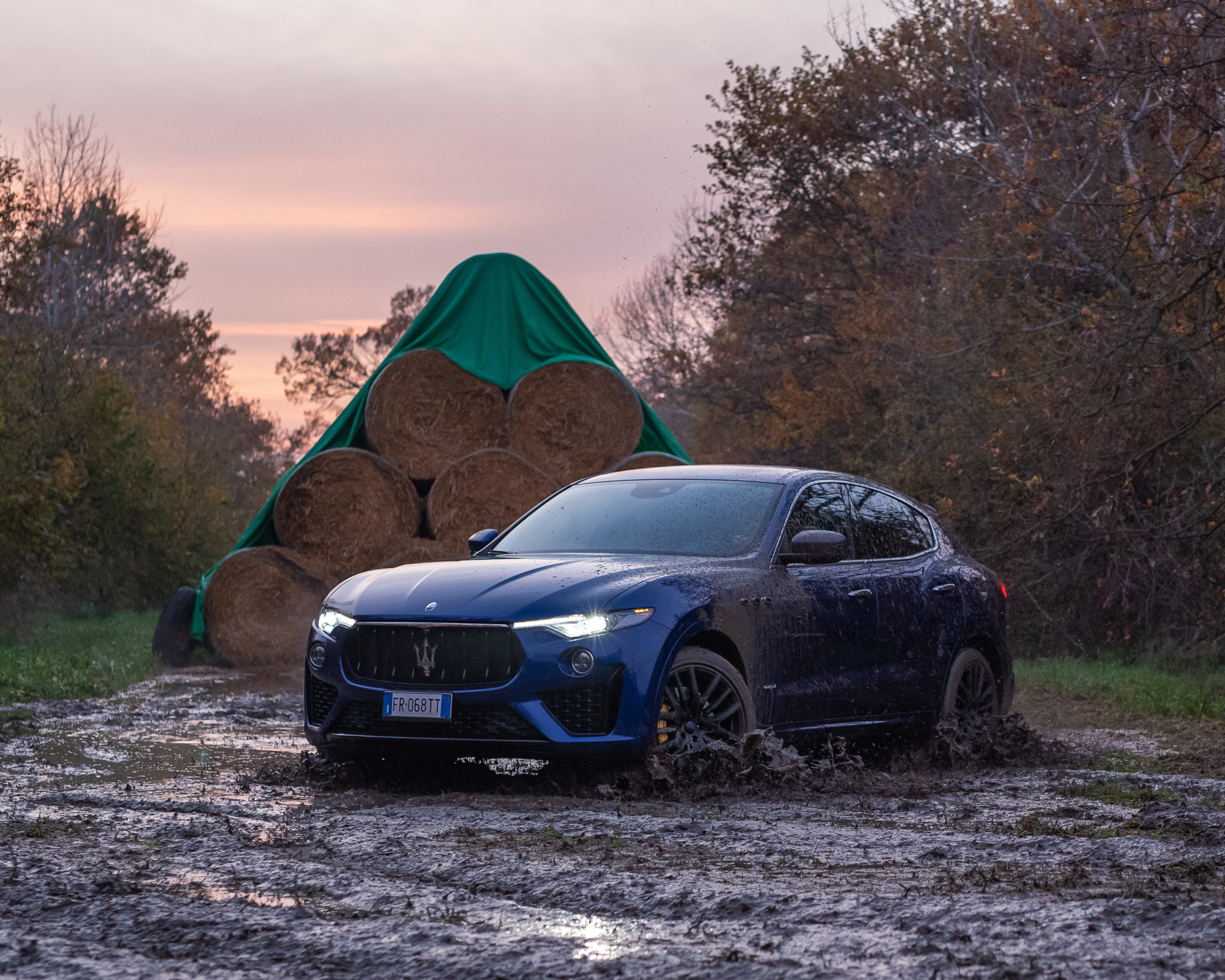Testing the Maserati Levante GTS on Its Home Turf
It is the first clear day after two weeks of rain in Emilia-Romagna, and as the Maserati Levante exits a sharp corner the Italian countryside is suddenly exposed: stately villas, dark green fields, and patches of forest, leaves turning to rich shades of yellow and red. This is the GTS, a 3.8 litre, twin-turbo V8 marvel, and it makes short work of the winding hills above Maranello. The landscape flashes by in an abstract blur and a satisfying rumble of exhaust.
There is a relatively short freeway between Modena and the town of Maranello. For fans of Italian auto manufacturers, these are hallowed grounds. These are the historic homes of Ferrari and Maserati, and riding the freeways while bearing their name feels almost auspicious. We race along this road, speeding toward the hills and getting comfortable with the Levante’s 550 horsepower. We don’t break any records (or even any laws), but we are treated to a satisfying display of the vehicle’s powerband. Its speed feels close and available at all times. And the hills? The Levante feels at home on these curving hummocks, its handling tight and responsive for an SUV that weighs more than 2 tonnes. At speed or under careful braking, it hugs the road and carries on defiantly.

This lightness takes a second to get used to. My brain tells me that I am driving something large and heavy, and yet Maserati’s engineering team produced a comfortable, everyday driver that could just as easily track the Fiorano Circuit as it could run errands in the city. Our guide, chiming in from the passenger seat, explains that owners taking advantage of one of Maserati’s driving experiences are always awed by the vehicle’s capabilities once they get it on the track. After a demonstration of the simulator at the Innovation Lab, and now this impressive showing on the hills, this does not come as surprising news. During the simulation, a makeshift Levante on great gyroscopes and complicated hydraulics lapped a race track with ease. With a bit of code, the technicians can swap out engines or tires, or change the weather like capricious gods. And the Levante, bearing its trident badge proudly, rises to any task they dream up.

From the hills, we head down toward the Umberto Panini Collection, located on Hombre farm, to pay homage to historic Maserati models., Once there, we have the opportunity to test the vehicle in an unexpected fashion. Because of the rain there is a quagmire beside the warehouse that stores the collection. For the sake of photography, but mostly for fun, I ask our guide if we are allowed to get the Maserati a little dirty. Moments later, he is driving the Levante through the mud pit. At first, we don’t achieve much spray or action. The traction control is just a little too good. He tries again, this time without the driving assist, and is soon sliding around in lazy, messy circles—putting smiles on all the bystanders’ faces.

It is a fitting end to the day, and we have to return the very muddy Levante. By now it is rush hour, and our pace slows. The congestion is very welcome, as it highlights another defining Maserati feature. When sport mode is engaged, each downshift produces a delightful crackle. This makes every merge or stop sign a treat, as if you’re storm chasing and a sudden traffic control guarantees a particularly close thunderclap. We reach the outskirts of town, sport mode is turned off, and soon we arrive back at the Maserati campus. Representatives and drivers idle about, and their mouths drop when they see the state of the SUV. Our guide hops out of the car and jokingly blames it on us. He shakes his head and exclaims, “The Canadians don’t know how to drive!” I dissuade them of this notion immediately, because this is a car that I definitely want to drive again.

________
Never miss a story. Sign up for NUVO’s weekly newsletter here.




